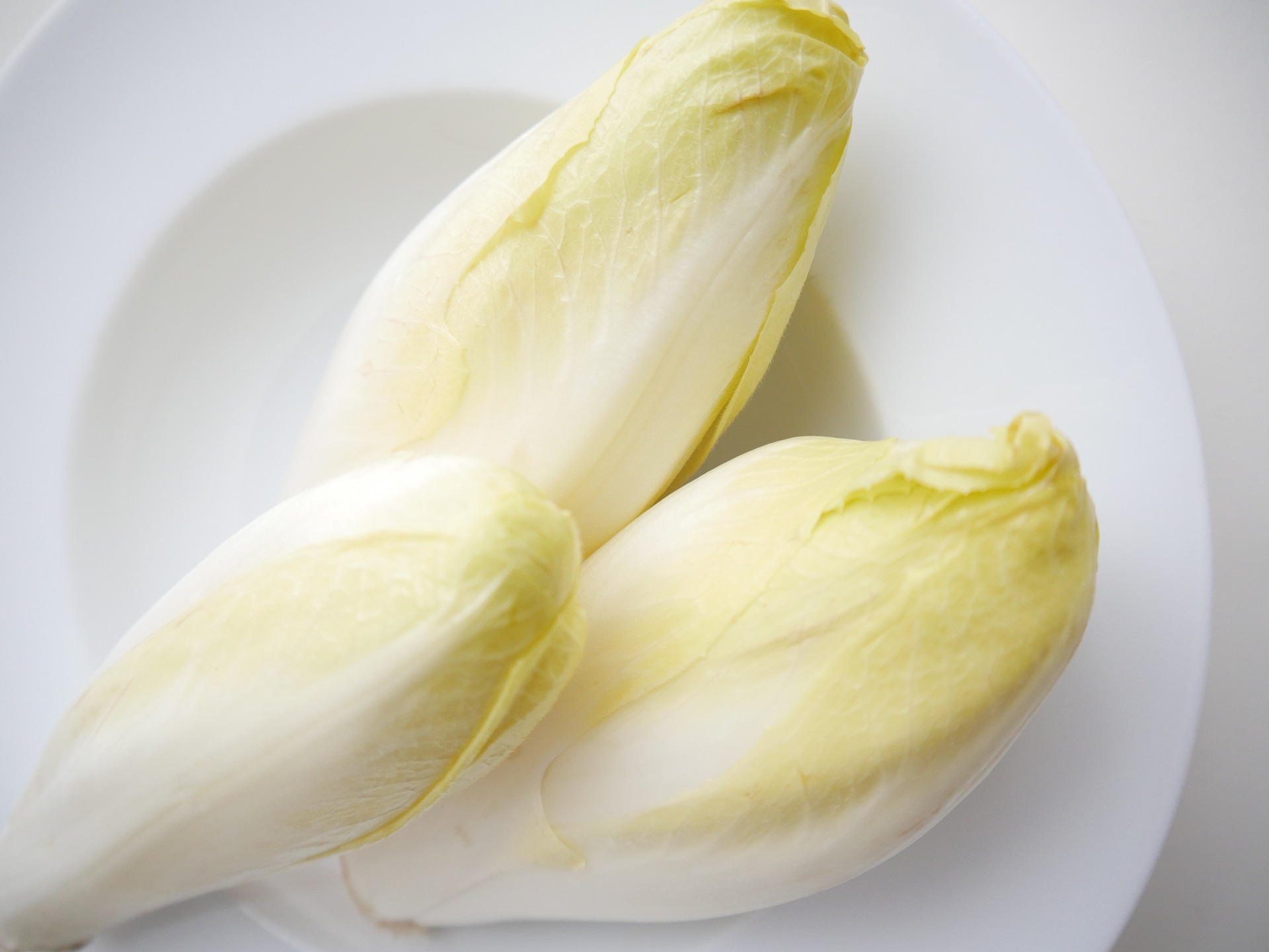
An old Dutch saying goes like this: ‘Bitter in de mond, maakt het hart gezond’, i.e. ‘bitter in the mouth, makes the heart healthy.’ Interestingly enough, it turns out to be true. European researchers have discovered that the bitter substances in chicory can be used as medicine. They have an anti-inflammatory effect. In sheep, the bitter substance in chicory act as an effective anti-worm remedy. At the same time, researchers also cultivated a chicory variety from which the bitter substances have been removed.
Researchers from Wageningen University & Research (WUR) in the Netherlands are working with other researchers in the European CHIC-project on divisional techniques for chicory varieties. These plants are related to endive. They hold beneficial dietary fibers and substances that could potentially be used as medicines. The research consortium has published the results of their research in the Plant Biotechnology Journal.
Sweetener
The best part of the chicory plant is below the ground. In fact, the roots are a source of inulin. This is a natural sweetener that is used in bread and dairy products and as a dietary fiber for healthy intestinal function. “Inulin has a positive effect on intestinal health,” says Katarina Cankar, researcher at WUR.
“Normally, inulin has to be separated from the bitter substances as these cause the bitter taste. But with new breeding techniques such as CRISPR-Cas, we have developed a plant in which those bitter substances are no longer present. This makes the cultivation process cheaper and simpler. It is also more sustainable, which means that inulin can be used more widely,” Cankar says in a WUR press release.
Within the European CHIC project, researchers and companies are also working on a variety of chicory plant that contain very specific bitter substances (terpenes). These substances could potentially be used as anti-inflammatory agents and as a medication against cancer. Matthew de Roode, corporate development manager at Sensus: “Bitter substances protect the plant against fungi and bacteria. We were able to demonstrate anti-inflammatory activity within the project. And previous research has shown that bitter substances in chicory have an anti-worm effect in sheep.”
New cultivation techniques
The new CRISPR-Cas technique specifically only targets the chicory DNA responsible for certain desirable or undesirable characteristics of the plant. “This technique introduces small changes to the DNA. That’s called genome editing. This means that the engineered chicory just contains its own DNA,” explains Paul Bundock of KeyGene. “We turned off four genes that are responsible for the bitterness. To do this, we took cells from the leaf, treated them and let them grow back into plants (in the greenhouse).”
“The breeding process goes a lot faster using this method.” Cankar adds: “That was technically difficult, but we succeeded. We have learned which genes are involved in the formation of the bitter substances. By using this technique, we can also change the degree of bitterness in chicory, for example.”
Opinion-forming
De Roode: “We also want to know what the European public thinks about the new breeding techniques that do not involve inserting extra DNA. Aside from being a breeding project, this is very much an opinion-forming project.” Cankar: “Our art and science section works together with artists to talk about plant breeding in a different way and to make people curious. For example, those interested can visit an online exhibition or sow chicory through an app. Our research project contributes towards improving chicory cultivation and people’s health.”
As part of the project, the researchers are also working on chicory strains that are less sensitive to the degradation of inulin that naturally takes place in the autumn when the crop is under cultivation. De Roode: “The amount of inulin is not a constant factor. The peak is in October and November. Colder weather makes the plant draw on its inulin reserves more quickly. The new variety should be less sensitive to this and therefore be able to yield more inulin.”
Also interesting: Breakthroughs with photonics: growing lettuce with red and blue light







